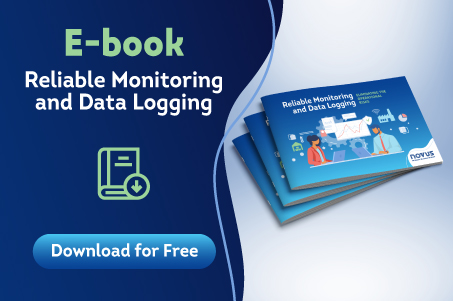Myths and Truths about Industry 4.0
With the digitalization of the factory floor, we live in a time of great change in the industrial segment. The way companies buy, produce, distribute, and sell their products is becoming more and more dynamic and technological.
Since the First Industrial Revolution in the 18th century until today, process automation has the same goals: increase productivity, reduce errors and waste, provide more reliable subsidies for the decision-making process. With the technological leap of Industry 4.0, all these benefits have been amplified. To ride the wave of Industry 4.0, you must be careful and plan your steps.
Many companies do not start off on the right foot. That is why they fail and are unable to prove the value of the new technologies. You need to ask yourself about the benefits and harms that using them will bring to this era of production.
After all, what is myth and what is truth about the fourth industrial revolution?
Get to know some of them and evaluate if you are prepared to make the change in the best possible way.
Myth: New technologies are too expensive
This is an old thought and the result of a confusion between investing and spending money. The idea that new technologies are unaffordable was very common in the days of flat screen TVs, DVDs, tablets, and smartphones. With proper planning, no one will go bankrupt by investing in Industry 4.0.
Larger investments in technology, i.e., those made in advanced robotics, also benefit innovation as labor costs increase and the price of high-tech solutions decreases.
Truth: Industry 4.0 enables better use of resources
Lean Manufacturing is a concept that supports the idea of eliminating waste to increase productivity and optimize processes. That is, to use the available resources (people, materials, equipment, machines, etc.) to the maximum.
It is not a new idea, but Industry 4.0 allows it to be effectively implemented. Thanks to technology, there is a very large volume of data. This makes it possible to apply continuous improvement processes in pursuit of near-perfect optimization.
Myth: Industry 4.0 can only be embraced by large multinationals
Although small companies take longer to adopt the fourth industrial revolution (which can reduce their competitiveness, since they lack the resources and skilled labor to work with these systems), there are already companies (mostly startups) that are born with technology in their DNA. These companies can occupy entire market niches and replace those that do not have the structure for technological innovation.
Truth: Industry 4.0 will bring agility and autonomy to processes
With increasingly demanding consumers, the speed of the production line can lead an industry to success or ruin. In this age of immediacy, those who invest in technologies capable of reducing production time without increasing costs or losing the quality of the final product are ahead of time.
Through digitalization, it is also possible to accelerate the people development, increasing employee security or using automation to overcome labor shortages in specific routines.
There is room to develop real-time analysis technologies, consuming fewer reagents, labor, and other resources. At the same time, you can automate the process of quality control, risk analysis, and deviation investigation.
Myth: The technological revolution will cause widespread unemployment
The use of new technologies and increasingly intelligent robots created a discussion about the replacement of humans and a possible wave of unemployment.
A report published by the World Economic Forum estimates that about 75 million jobs will disappear due to new technologies. On the other hand, 133 million new jobs, stemming from the same innovations, could emerge by 2022 worldwide.
This is a positive scenario, since the new technologies are attractive and will help to implement more challenging and diversified tasks, focusing on interpersonal communication, creativity, problem solving and increased skills.
Truth: Industry 4.0 is safer for employees
The human factor is also vital in Industry 4.0. The sector usually suffers a lot from accidents, indemnities, and labor lawsuits. Technology can prevent such problems. Again, the solution remains in the volume of data: it helps to better manage maintenance and to have greater control over the activities performed by employees.
However, it is important to keep in mind that no technology will bring good results if there is no trained staff to operate it.
Industry 4.0 professionals need to reinvent themselves. Analytical and data interpretation skills will be essential. In addition, you need a team that adapts easily and learns fast because innovation is constant and there is always something new on the market.
There are some basic, but very important steps to help your operation succeed:
- Create a Strategic Plan:: Implementing the concept of Industry 4.0 requires planning. Research the problems your company faces and the technologies that can be adopted and make a long-term plan to gradually modernize your business.
- Make Pilot Project: Trying out the innovations of the new industrial revolution is very attractive but keep your feet on the ground. As these technologies require investments, most technology companies offering solutions for Industry 4.0 are willing to do pilot projects. Start small, run tests, and analyze the first results.
- Become a Data Fanatic: High volume of data is the Industry 4.0 foundation. But there is no point in having millions of data at your disposal if you are not inclined to analyze it and make decisions based on it. So do not be afraid to dive into the data, explore it, and base your actions on what it tells you.
As we can see, Industry 4.0 connects all parts of your operation and can help you better use resources and detect failures before they happen. These technologies can lead to continuous improvement and provide data to help executives make decisions. With dedication, study, and planning, you can adopt the new trends on your factory floor and ensure the success of your operation!

















